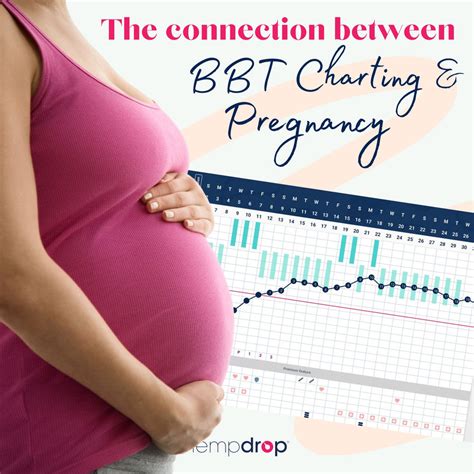For many couples, trying to conceive can be a thrilling yet sometimes frustrating experience. One of the most effective ways to increase the chances of getting pregnant is by understanding and tracking the woman’s menstrual cycle, specifically through Basal Body Temperature (BBT) charting. This ancient yet sophisticated method involves monitoring subtle changes in the body to pinpoint the most fertile days, significantly improving the odds of conception. In this comprehensive guide, we’ll delve into the world of BBT charting, exploring its basics, how it works, and most importantly, how it can help you get pregnant faster.
Understanding Basal Body Temperature
Basal Body Temperature (BBT) refers to the body’s temperature at rest. It’s the lowest temperature your body reaches during a 24-hour period, typically measured immediately after waking up, before getting out of bed, and ideally after at least 4-6 hours of uninterrupted sleep. The BBT is influenced by various hormonal changes throughout the menstrual cycle, making it a valuable indicator of fertility.
How BBT Charting Works
The concept behind BBT charting is straightforward: it involves taking your temperature every morning at the same time and recording it on a chart or using a fertility app. Over time, you’ll start to notice patterns and changes that correlate with your menstrual cycle. Here’s a simplified overview of what you might observe:
- Pre-Ovulation (Follicular Phase): During this phase, your BBT tends to be lower, typically ranging from about 97.2 to 97.7 degrees Fahrenheit.
- Ovulation: Around the time of ovulation, you might notice a slight dip in temperature, which is then followed by a noticeable increase.
- Post-Ovulation (Luteal Phase): After ovulation, the temperature increases by about 0.4 to 1 degree, averaging between 97.7 and 98.3 degrees Fahrenheit, due to the rise in progesterone levels. This higher temperature range usually indicates that ovulation has occurred.
Implementing BBT Charting for Faster Conception
While BBT charting can’t guarantee pregnancy, it significantly enhances your understanding of your fertility window, allowing for more targeted and effective conception attempts. Here are some tips to maximize the potential of BBT charting:
- Consistency is Key: Ensure you’re taking your temperature at the same time every day, preferably before getting out of bed or engaging in any physical activity.
- Choose the Right Thermometer: Digital thermometers, especially those designed for BBT, offer the precision needed for accurate tracking. Consider using a thermometer specifically labeled as “basal body thermometer” for optimal results.
- Record Everything: Use a dedicated chart or app to log your temperatures, alongside any additional symptoms or notes about your menstrual cycle, which can help identify patterns more clearly.
- Look for the Temperature Shift: The key to identifying your most fertile window is recognizing the temperature shift post-ovulation. This shift, in conjunction with other fertility signs such as cervical mucus changes, can indicate the best times to try to conceive.
- Consider Additional Fertility Signs: While BBT is a powerful tool, combining it with observations of cervical mucus, ovulation predictor kits (OPKs), and even the sensation of ovulation (mittelschmerz) can provide a more comprehensive view of your fertility cycle.
- Maintain a Healthy Lifestyle: Factors such as irregular sleep patterns, alcohol consumption, and certain medications can affect BBT readings. Maintaining a consistent and healthy lifestyle can help ensure more accurate tracking.
Overcoming Challenges with BBT Charting
While BBT charting offers valuable insights, it’s not without its challenges. Some women may experience irregular cycles, making it harder to predict ovulation, or they might notice variations in temperature that don’t seem to follow the expected pattern. Additionally, stress, travel, or illness can temporarily disrupt BBT readings. Here are a few strategies to overcome these challenges:
- Combine Methods: Using BBT in conjunction with other fertility tracking methods can provide a more accurate picture of ovulation.
- Seek Professional Guidance: Consulting with a healthcare provider or a fertility specialist can offer tailored advice and strategies to enhance fertility, especially for those with irregular cycles or other complications.
- Stay Patient and Persistent: Conception can take time, and it’s essential to remain committed to tracking and understanding your body’s unique patterns.
Frequently Asked Questions
How accurate is BBT charting for determining ovulation?
+BBT charting can be fairly accurate for determining when ovulation has occurred, as evidenced by the temperature shift. However, it might not predict ovulation as precisely as other methods like ovulation predictor kits. Combining BBT with other fertility signs can enhance accuracy.
Can BBT charting work for women with irregular periods?
+While BBT charting can be more challenging for women with irregular periods, it's not impossible. It may require more time to establish patterns, and combining it with other fertility tracking methods can be particularly beneficial. Consulting a healthcare provider for personalized advice can also be helpful.
How long does it typically take to conceive using BBT charting?
+The time it takes to conceive can vary significantly from one couple to another. BBT charting can increase the chances of getting pregnant faster by identifying the most fertile window, but conception ultimately depends on various factors, including overall fertility health, frequency of intercourse during the fertile window, and lifestyle factors.
Conclusion
BBT charting is a powerful, non-invasive, and cost-effective method for understanding and tracking fertility. By meticulously monitoring basal body temperature and combining it with other signs of fertility, couples can significantly enhance their chances of conception. While it requires discipline and patience, the insights gained from BBT charting can empower individuals with a deeper understanding of their bodies, ultimately facilitating a more informed and proactive approach to family planning. Remember, every woman’s cycle is unique, and what works for one person may not work exactly the same for another. With persistence, the right tools, and perhaps a bit of luck, many couples find that BBT charting plays a pivotal role in their journey to parenthood.


